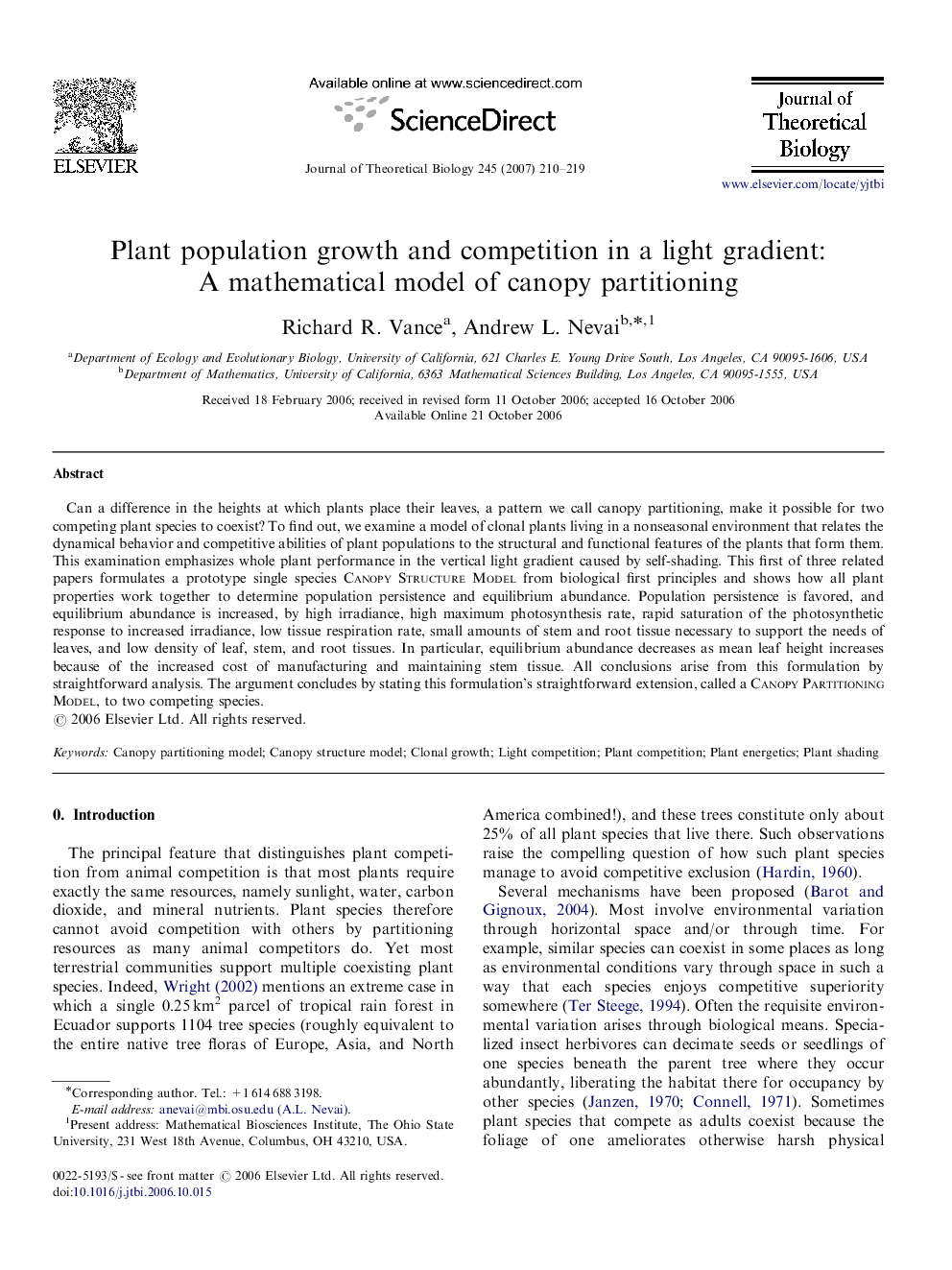| Article ID | Journal | Published Year | Pages | File Type |
|---|---|---|---|---|
| 4499183 | Journal of Theoretical Biology | 2007 | 10 Pages |
Can a difference in the heights at which plants place their leaves, a pattern we call canopy partitioning, make it possible for two competing plant species to coexist? To find out, we examine a model of clonal plants living in a nonseasonal environment that relates the dynamical behavior and competitive abilities of plant populations to the structural and functional features of the plants that form them. This examination emphasizes whole plant performance in the vertical light gradient caused by self-shading. This first of three related papers formulates a prototype single species Canopy Structure Model from biological first principles and shows how all plant properties work together to determine population persistence and equilibrium abundance. Population persistence is favored, and equilibrium abundance is increased, by high irradiance, high maximum photosynthesis rate, rapid saturation of the photosynthetic response to increased irradiance, low tissue respiration rate, small amounts of stem and root tissue necessary to support the needs of leaves, and low density of leaf, stem, and root tissues. In particular, equilibrium abundance decreases as mean leaf height increases because of the increased cost of manufacturing and maintaining stem tissue. All conclusions arise from this formulation by straightforward analysis. The argument concludes by stating this formulation's straightforward extension, called a Canopy Partitioning Model, to two competing species.
